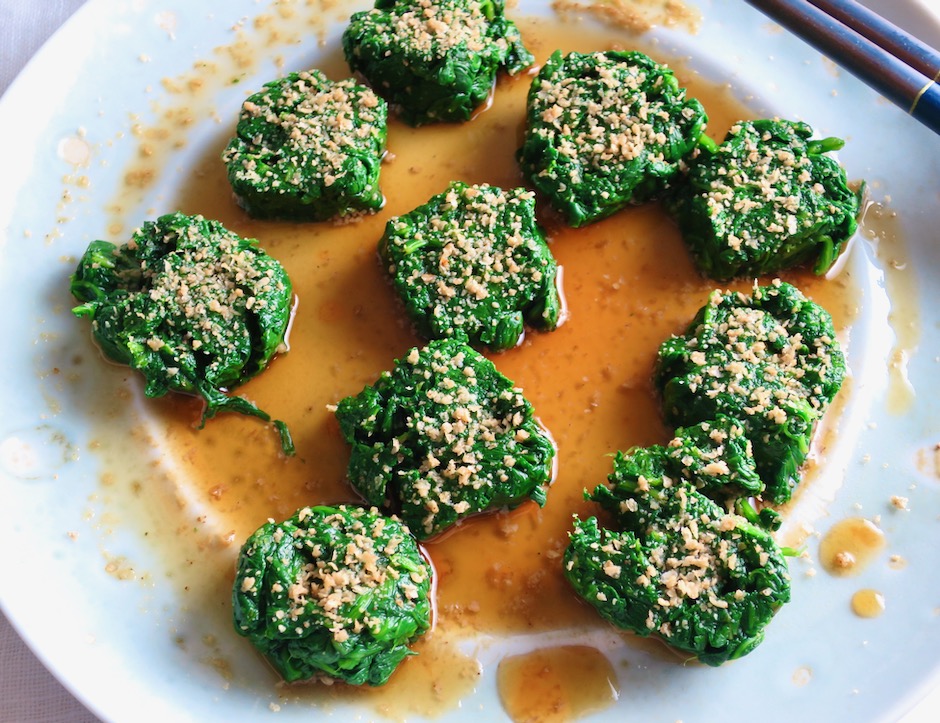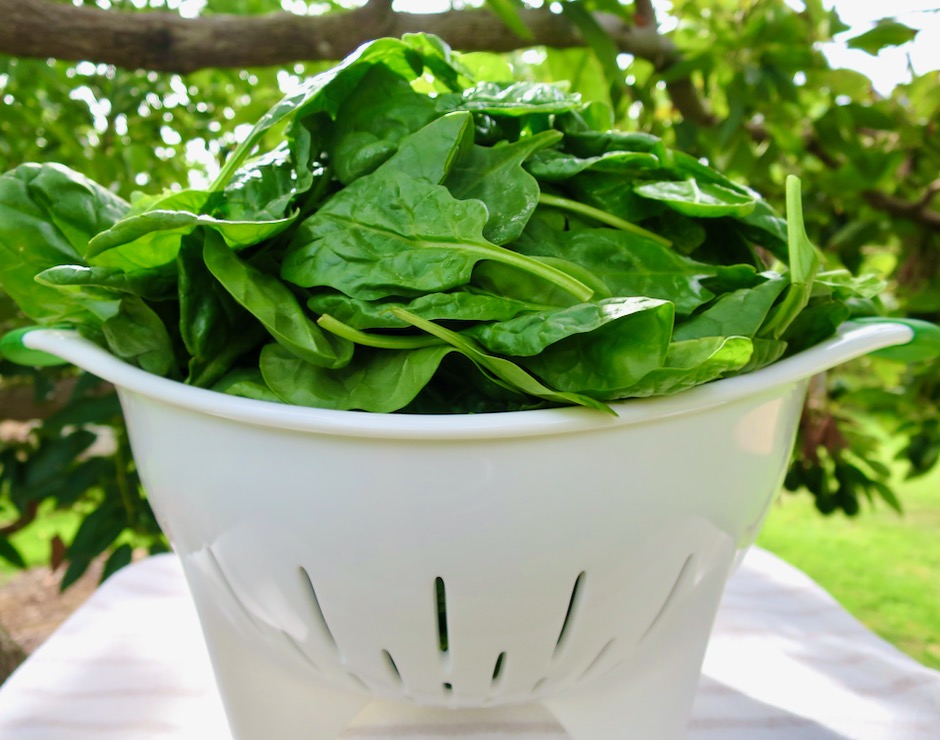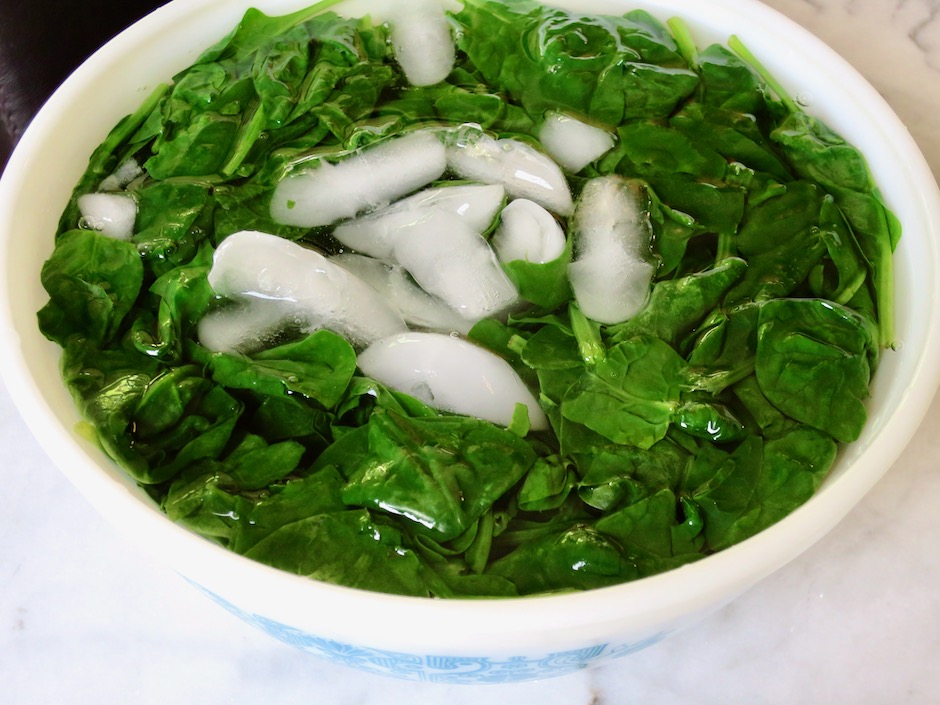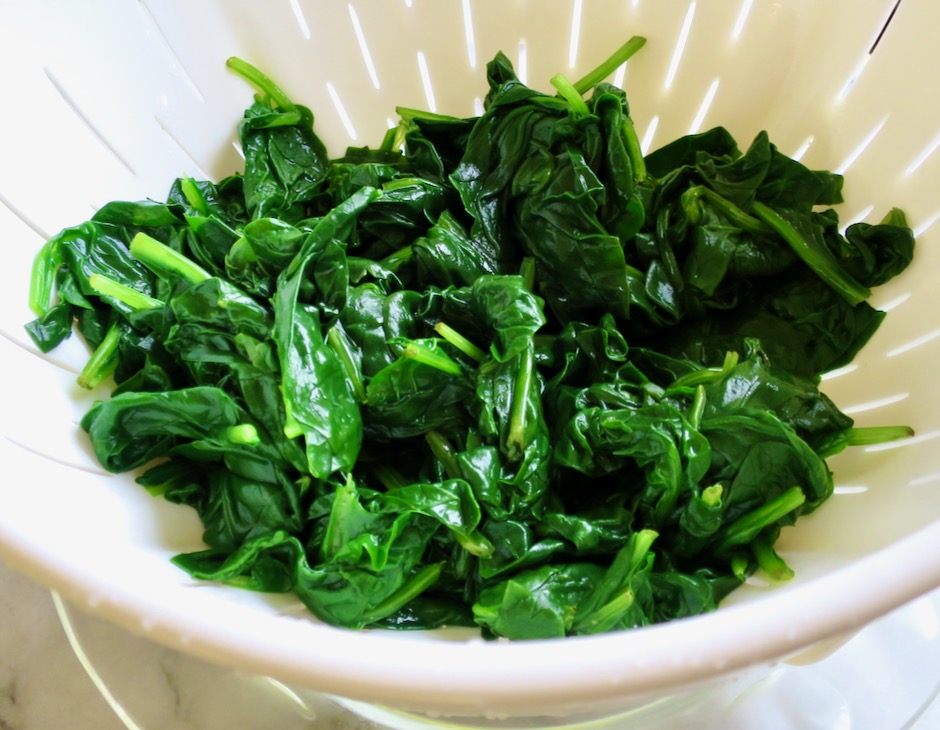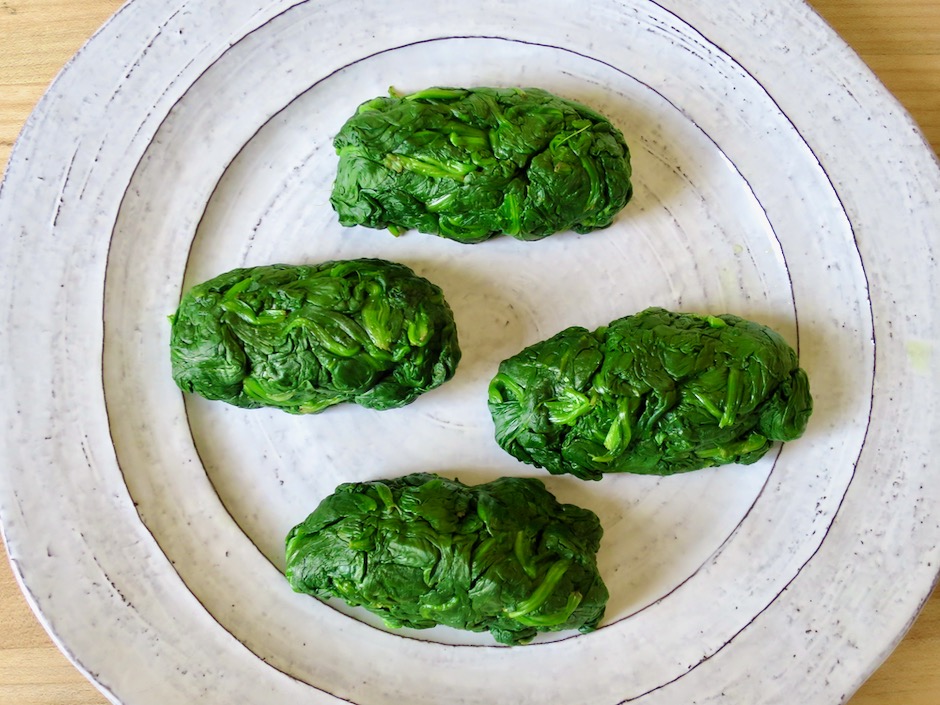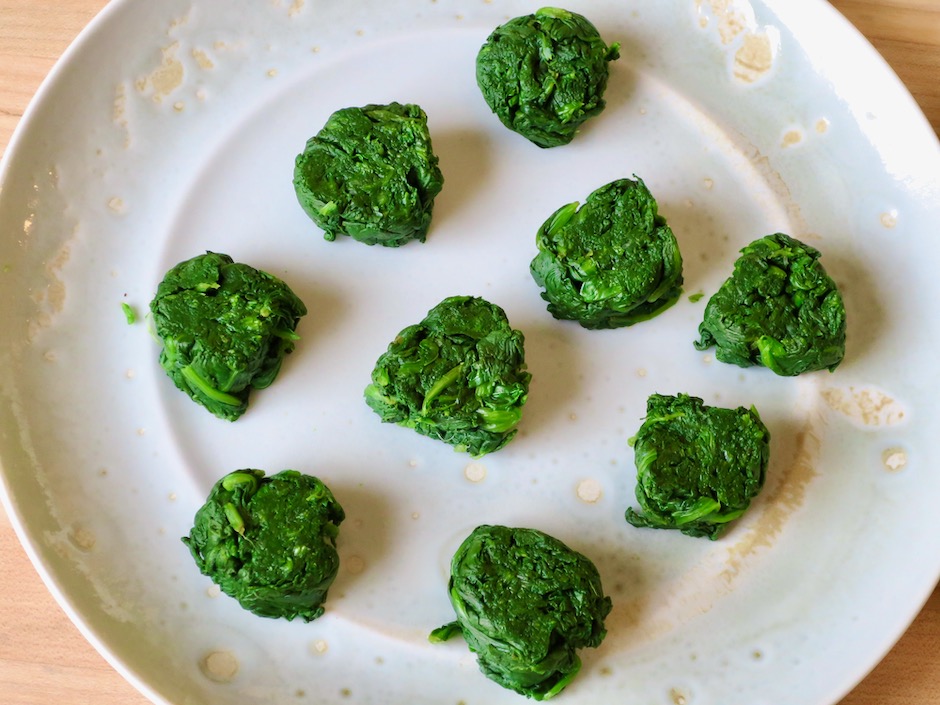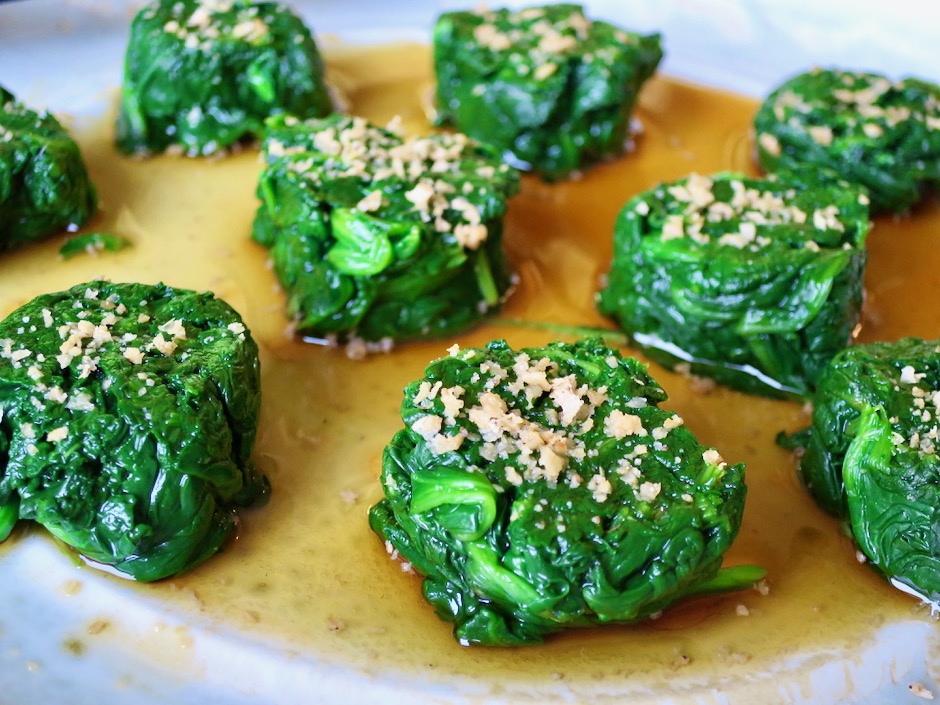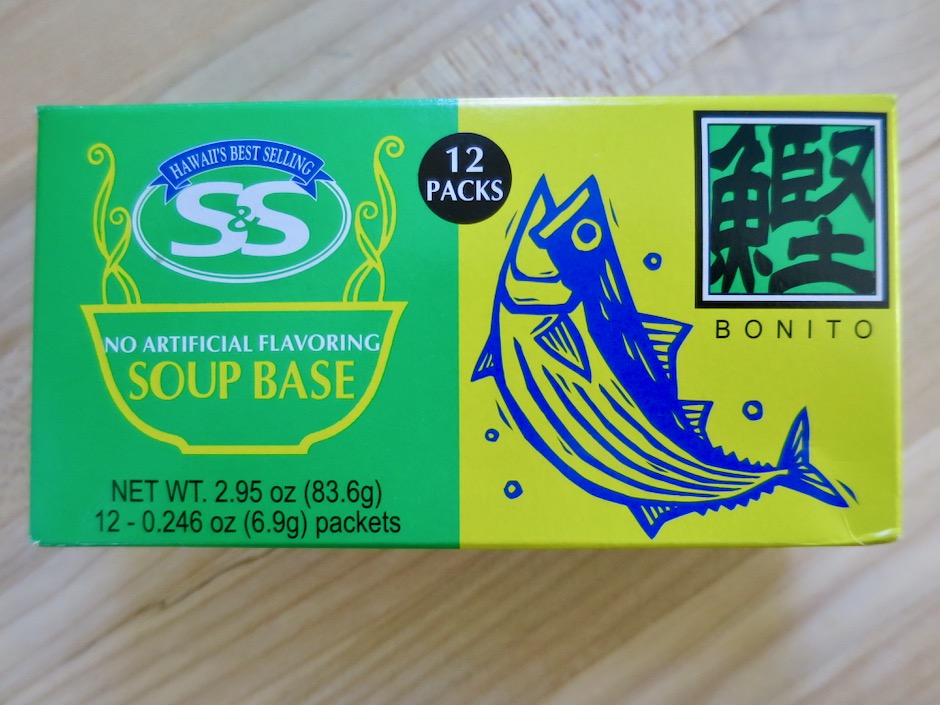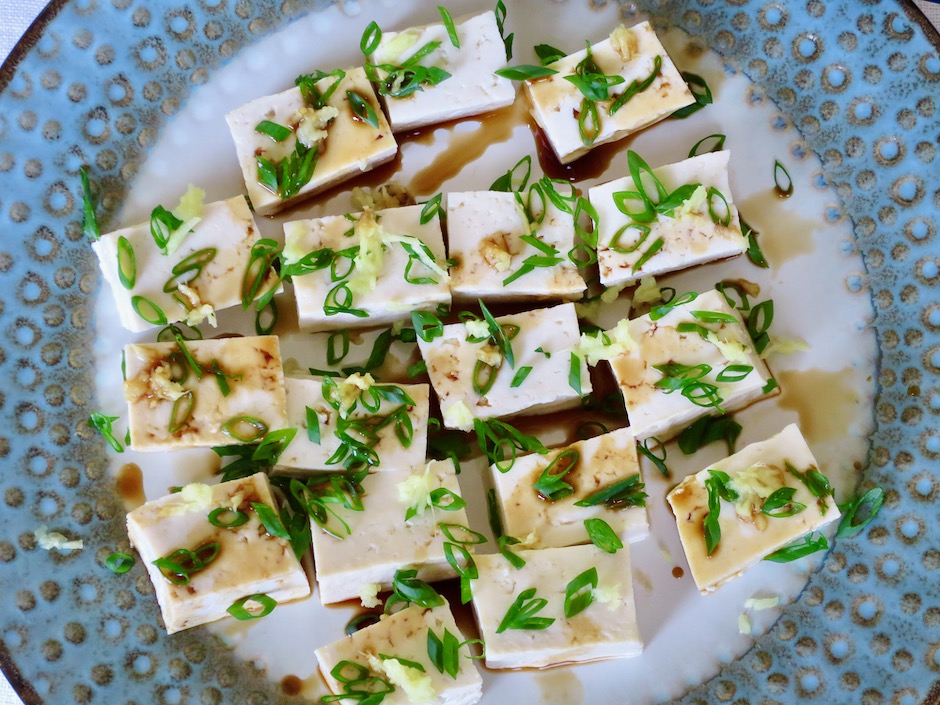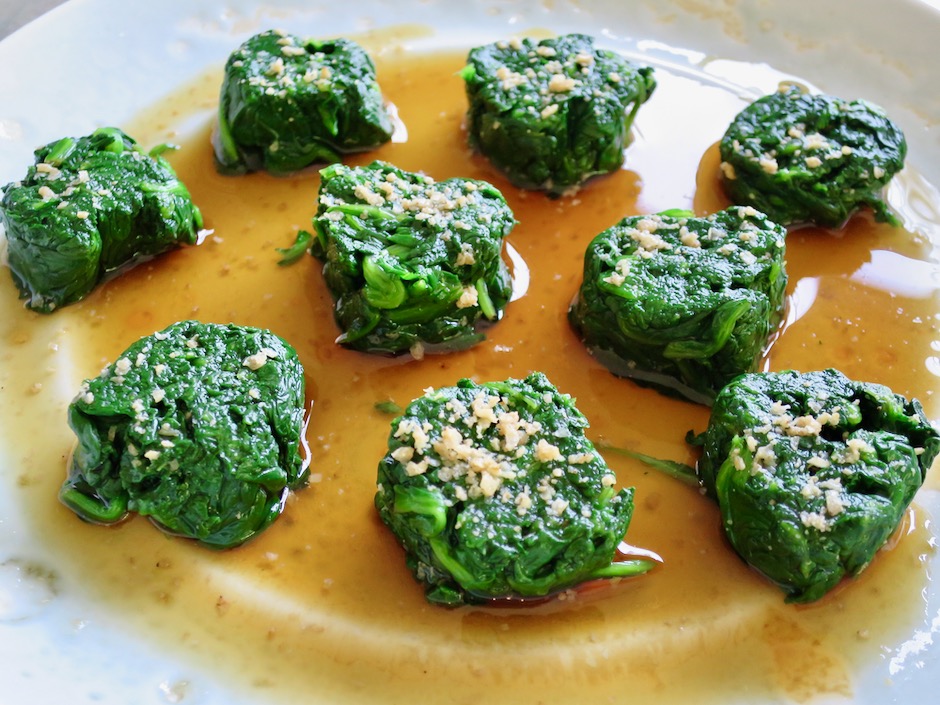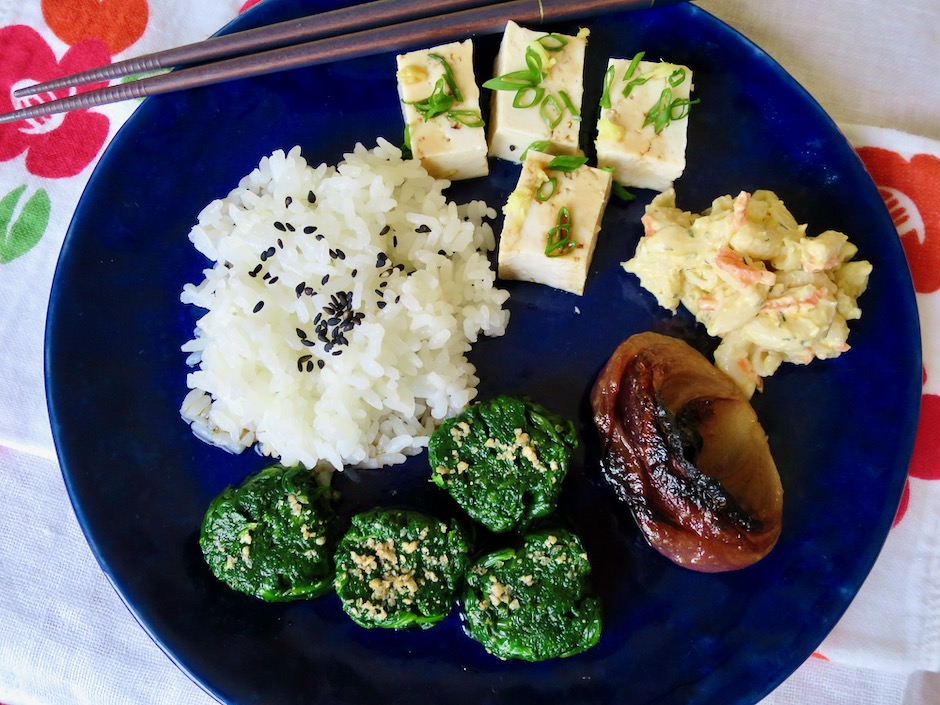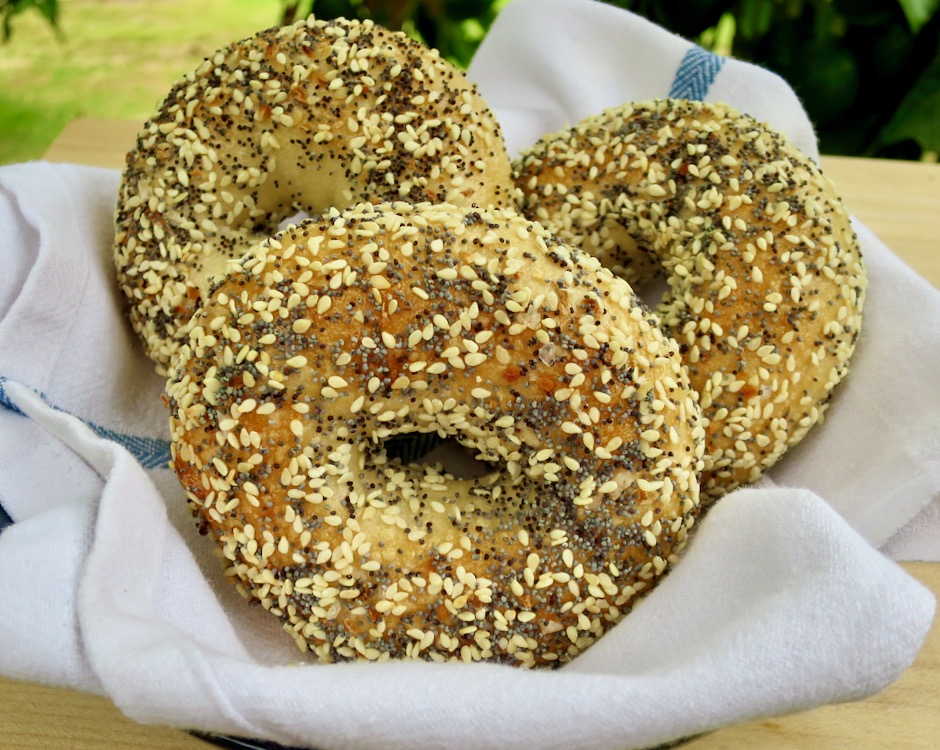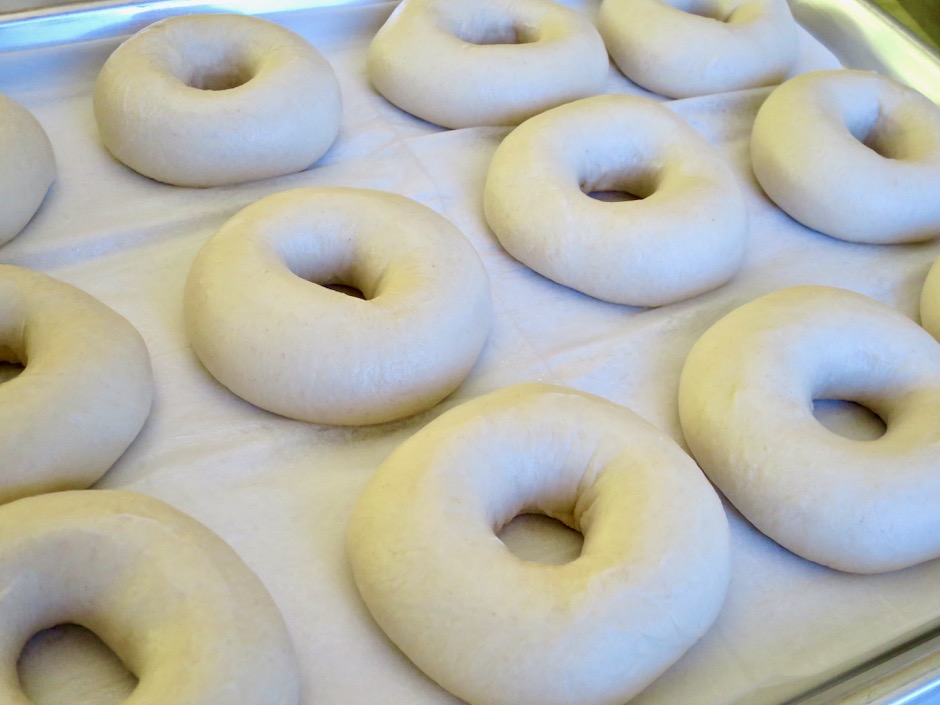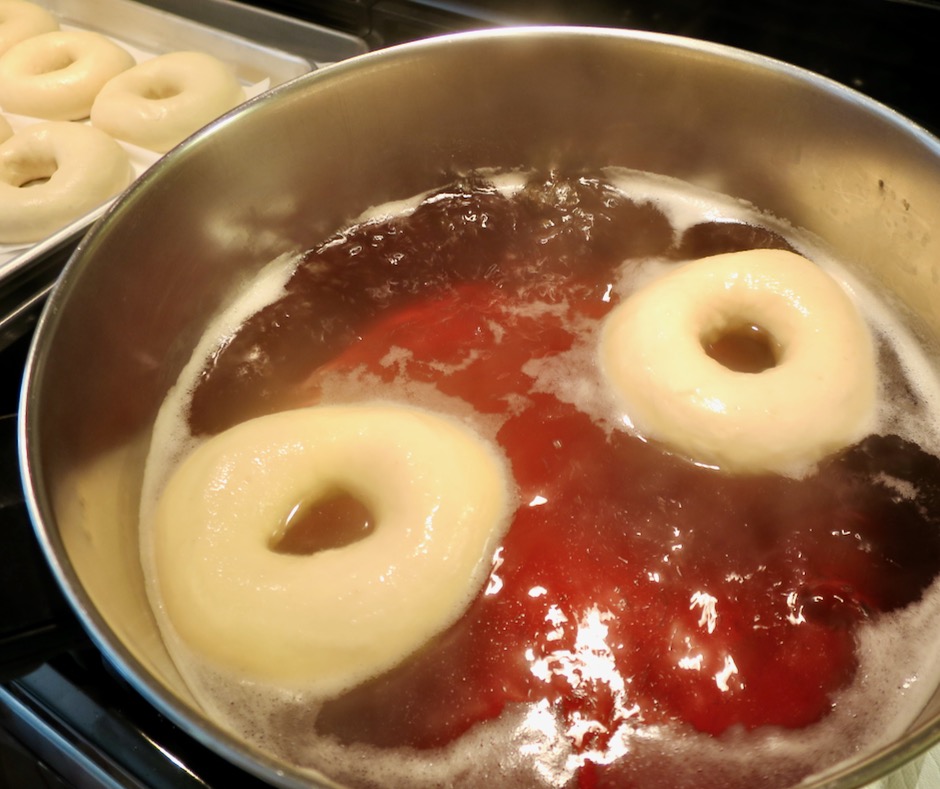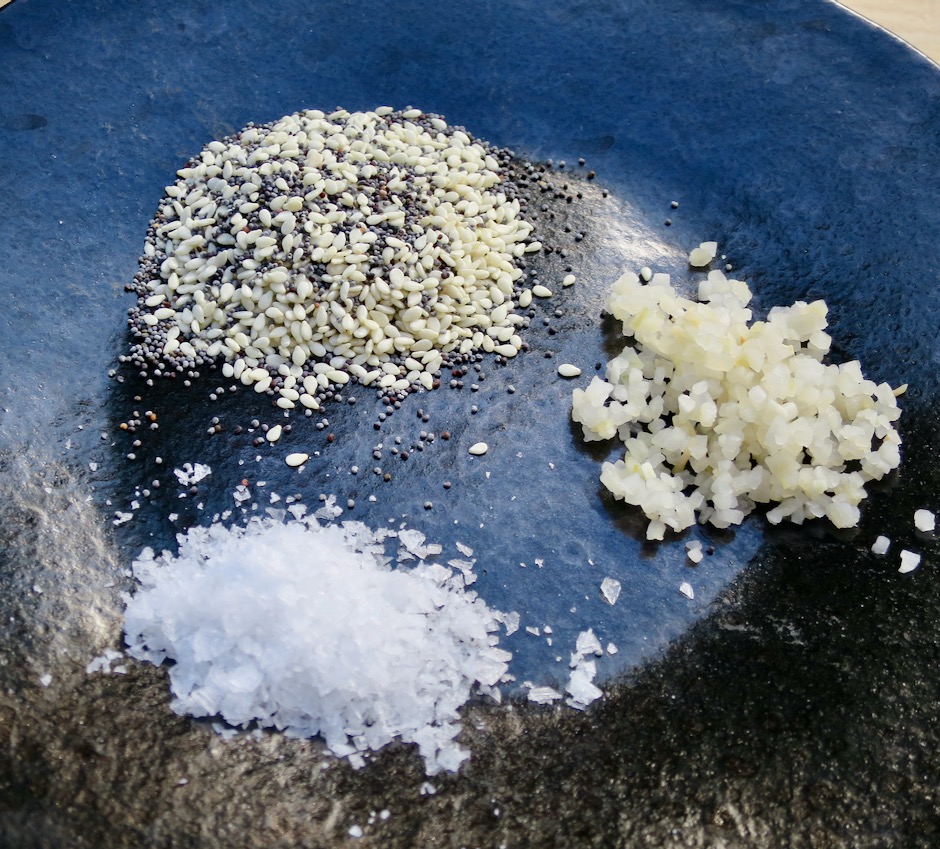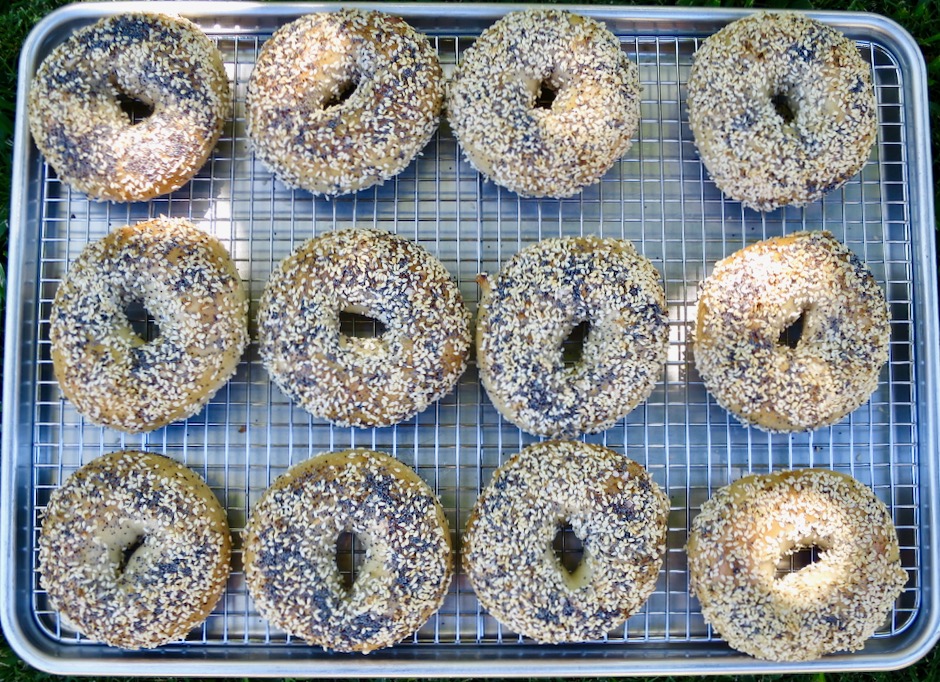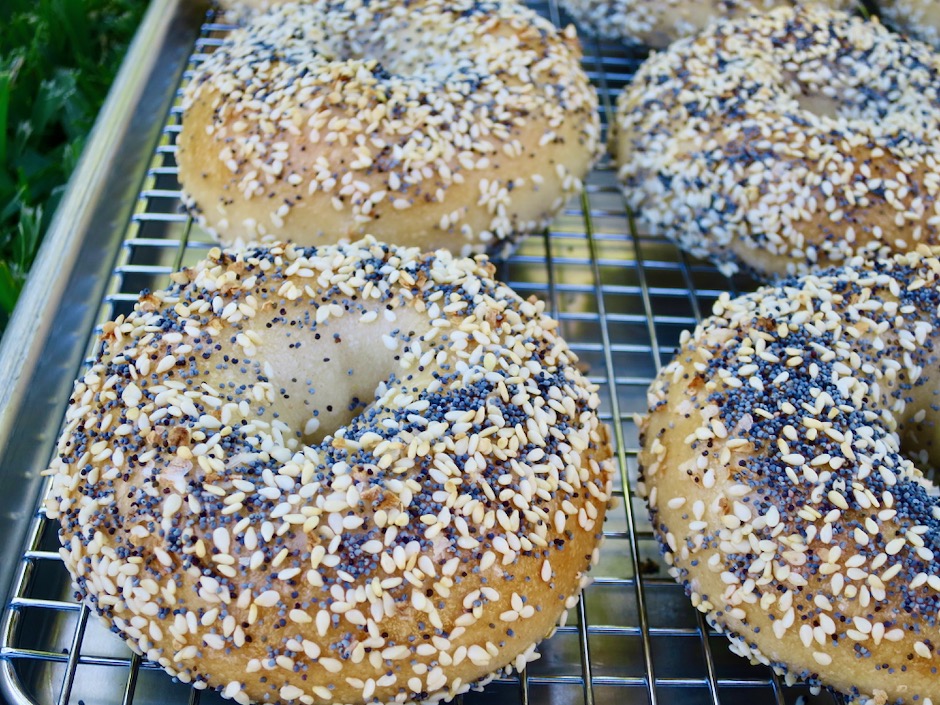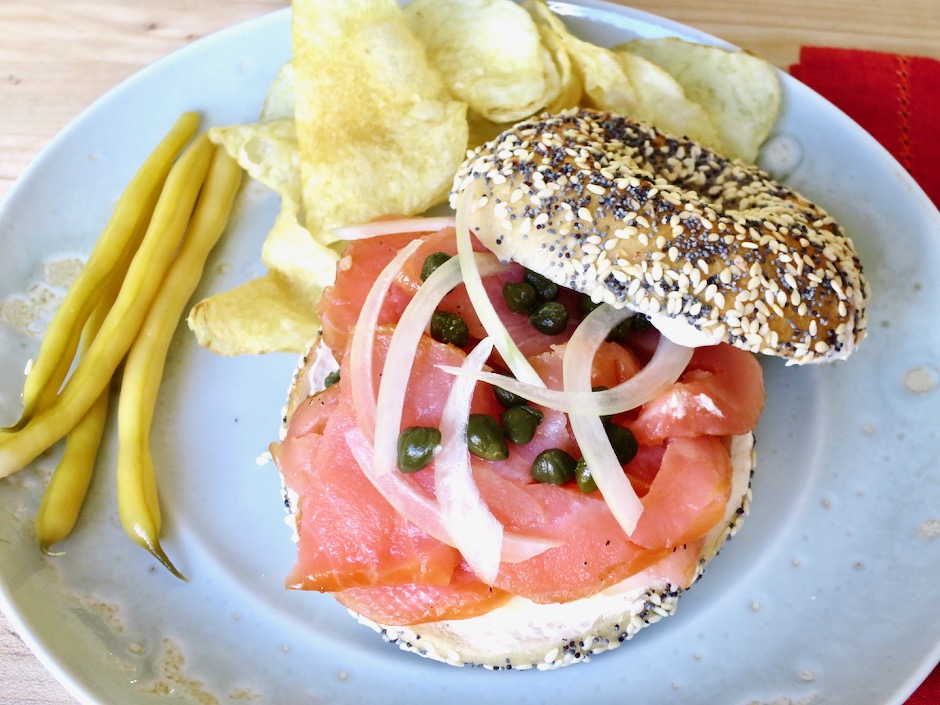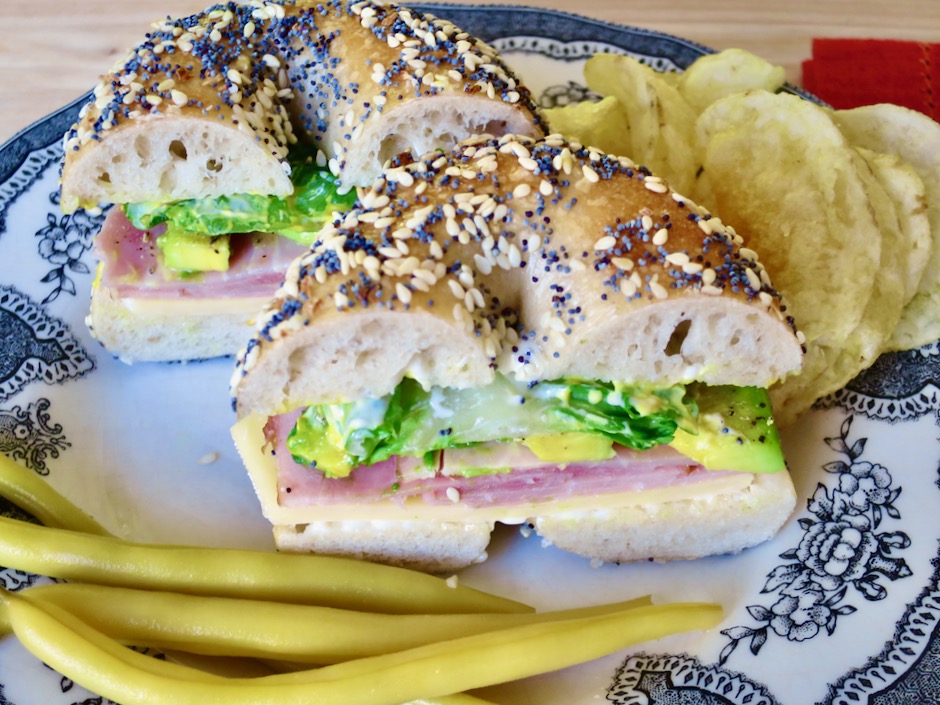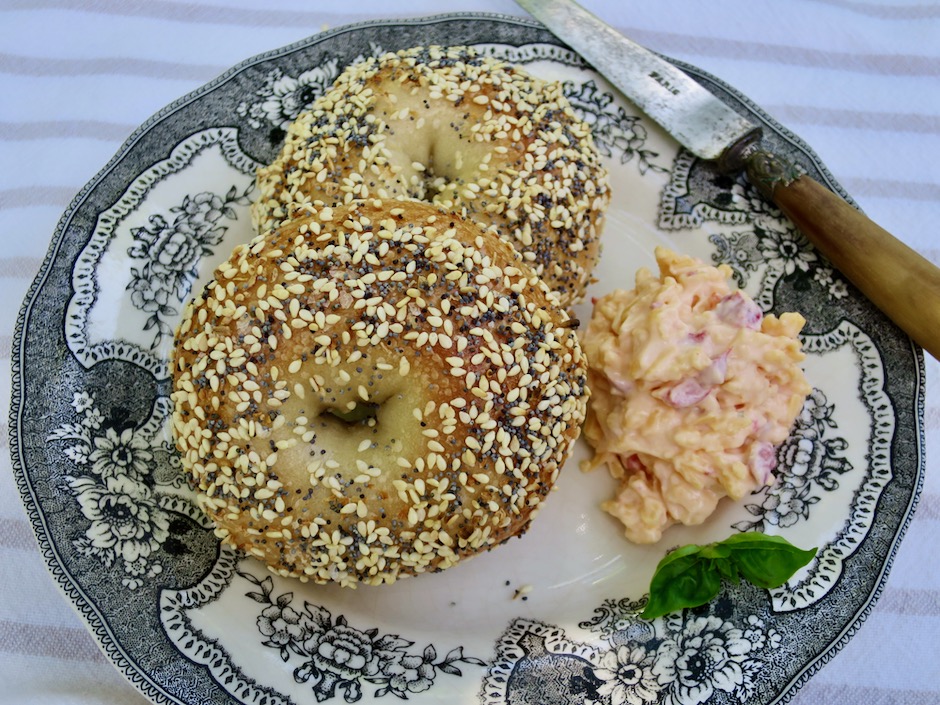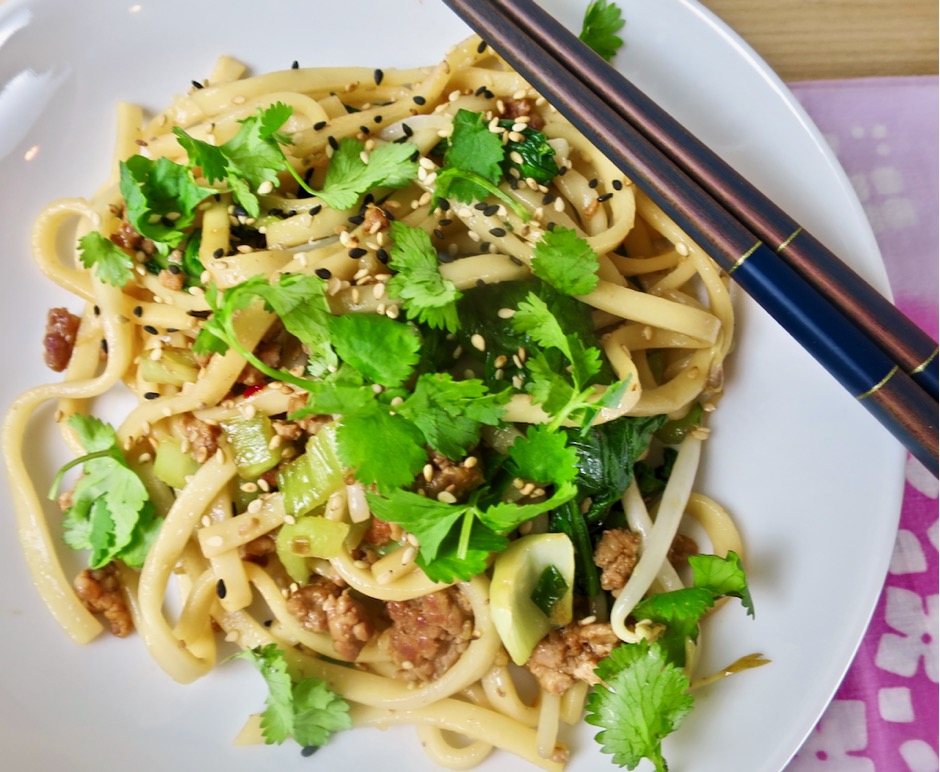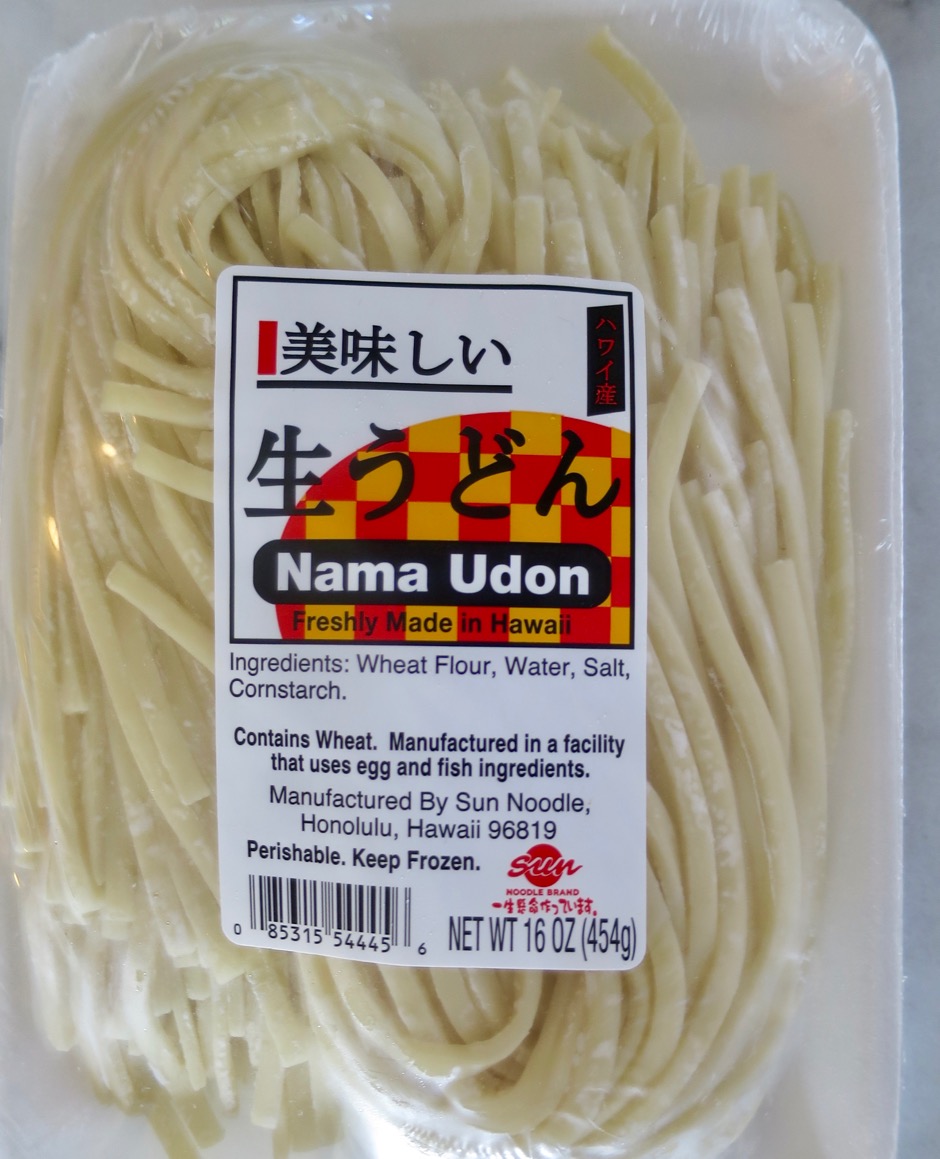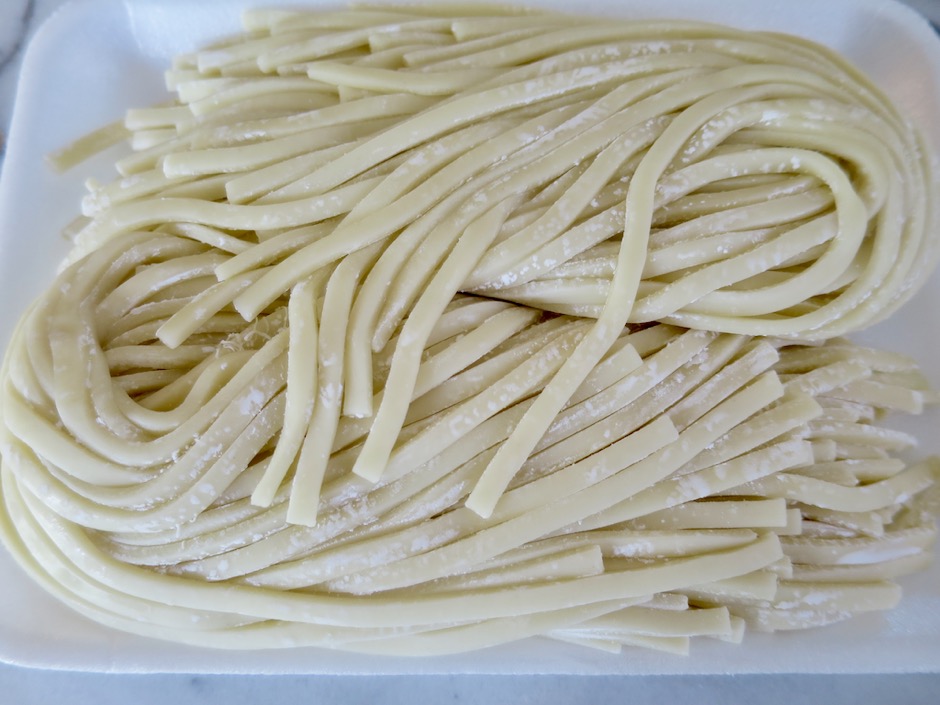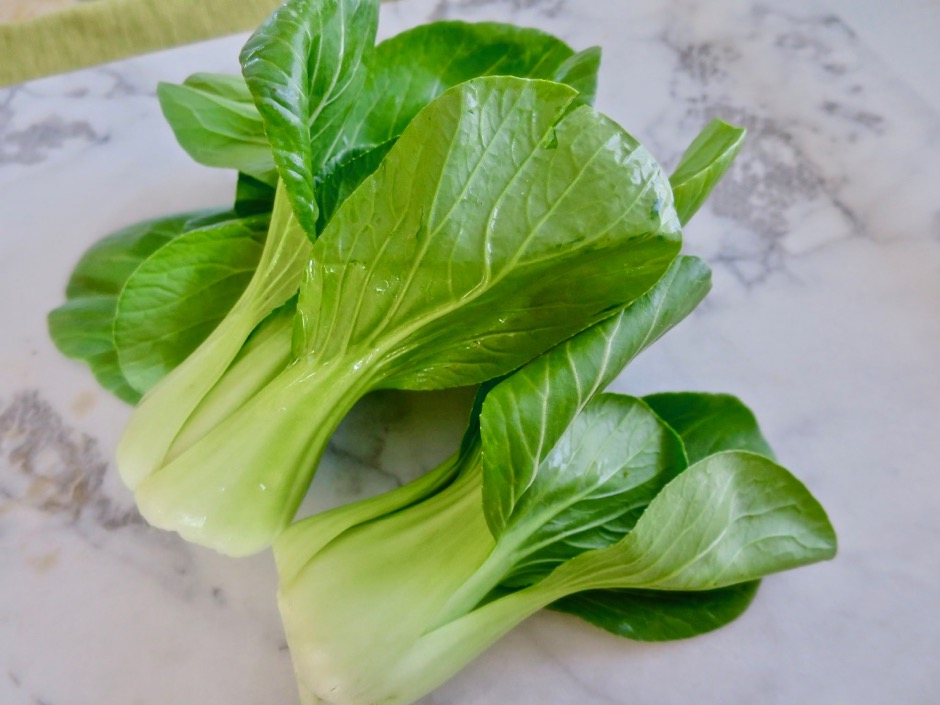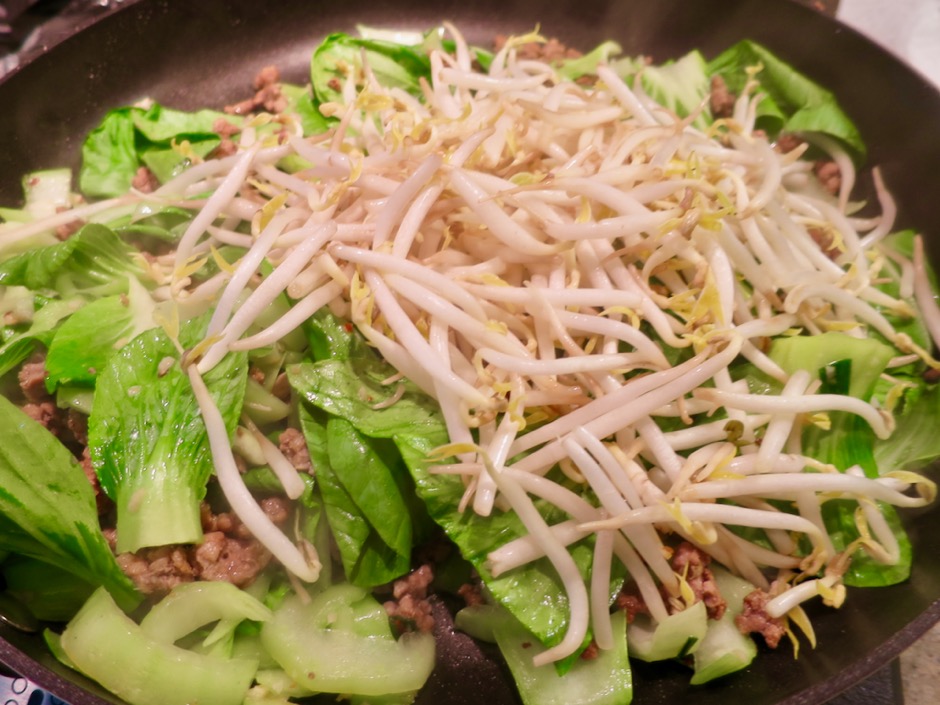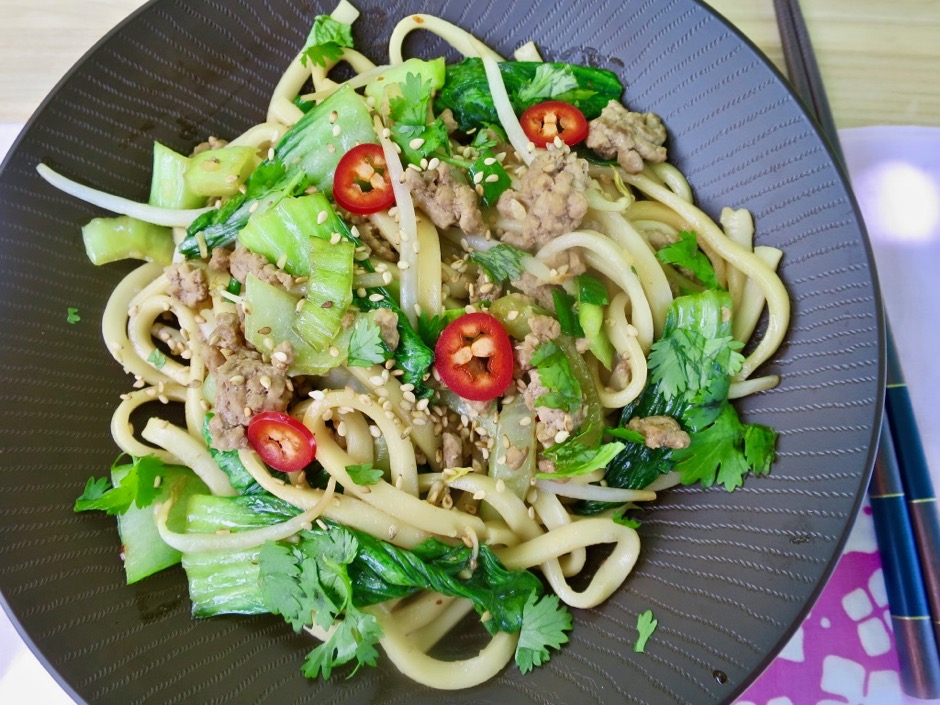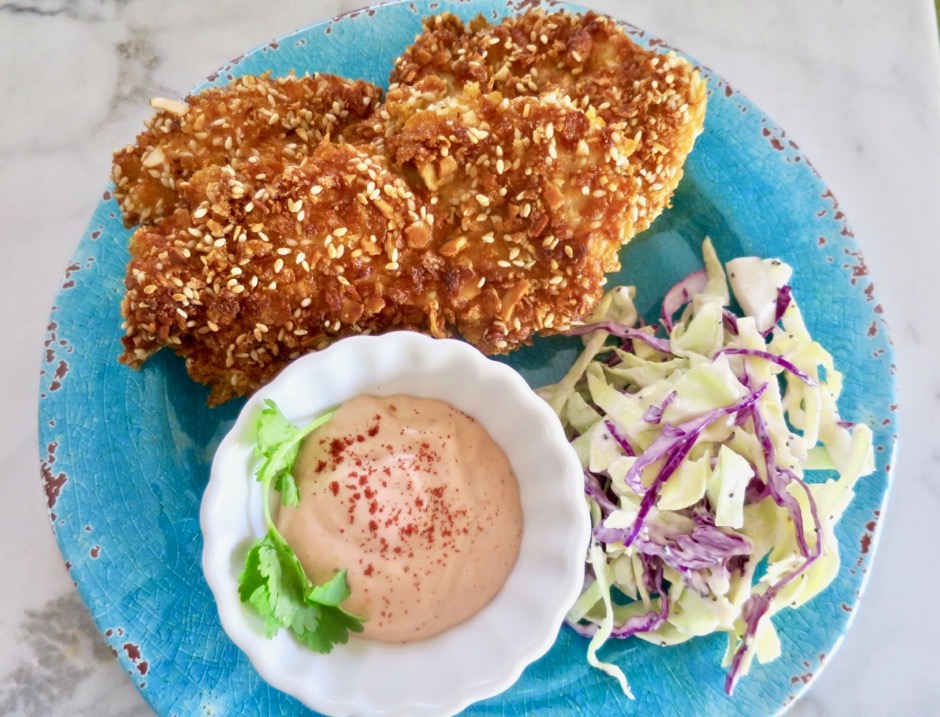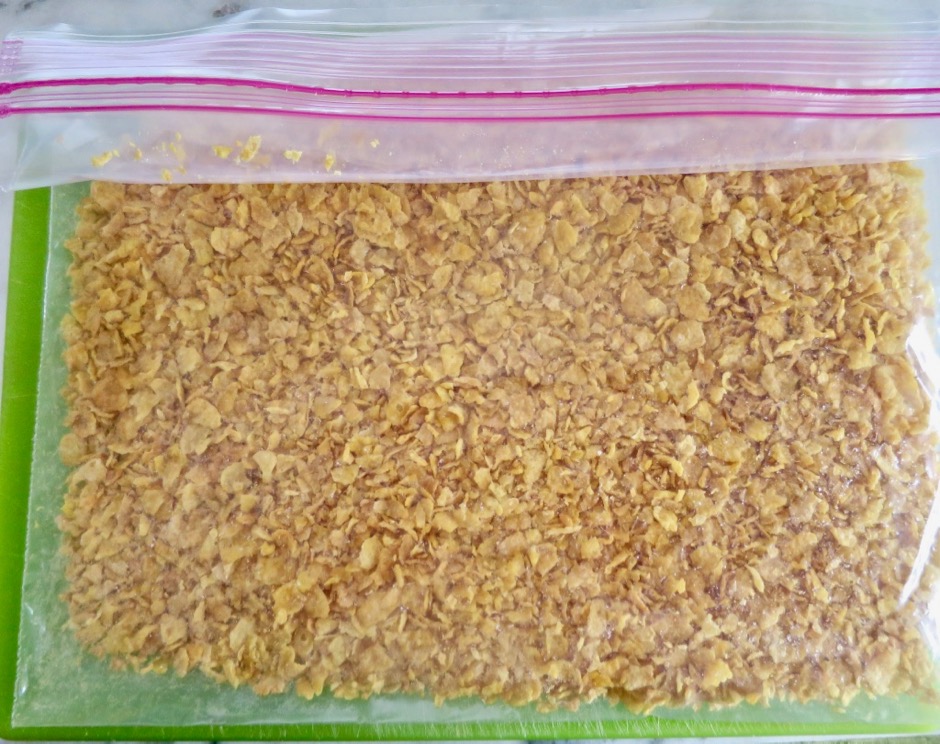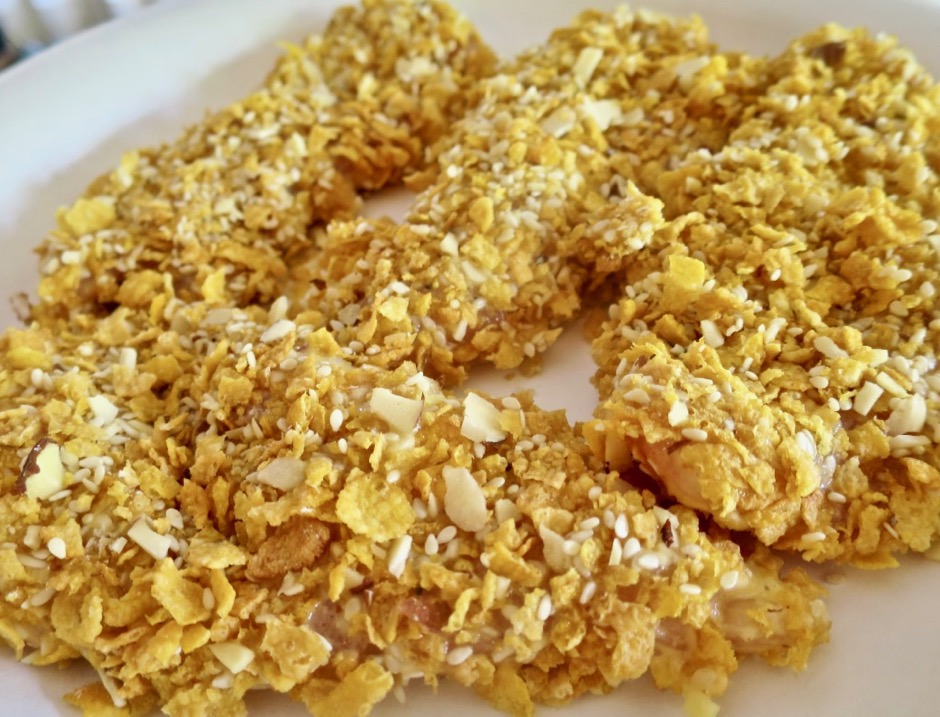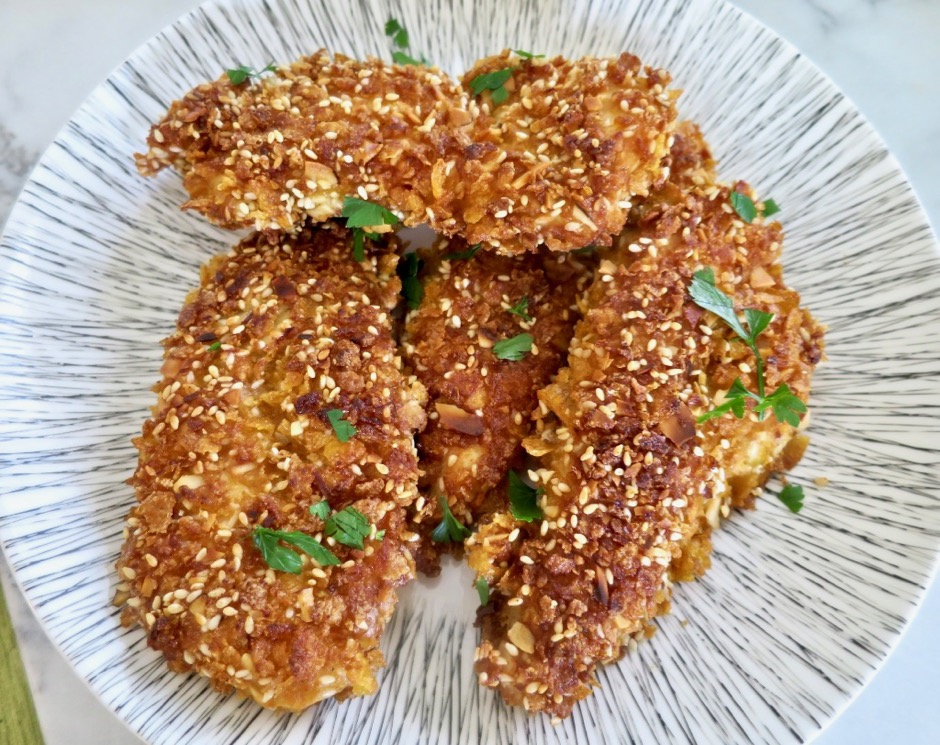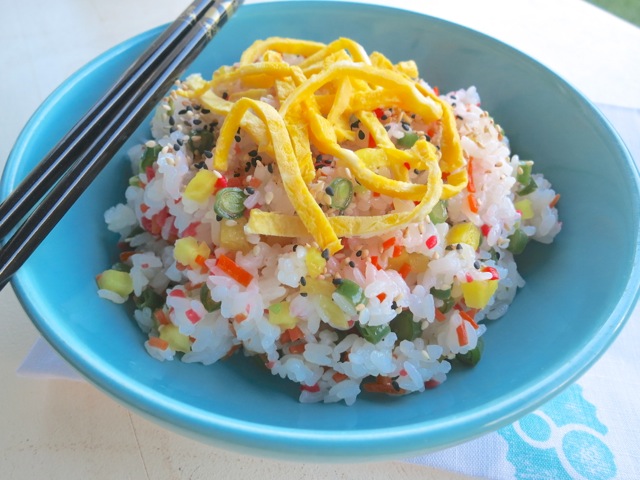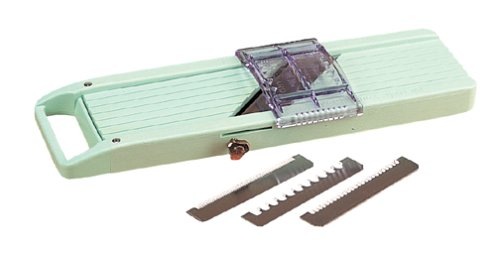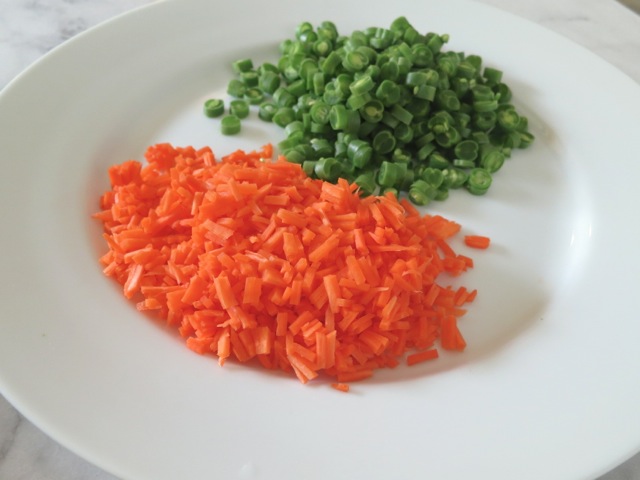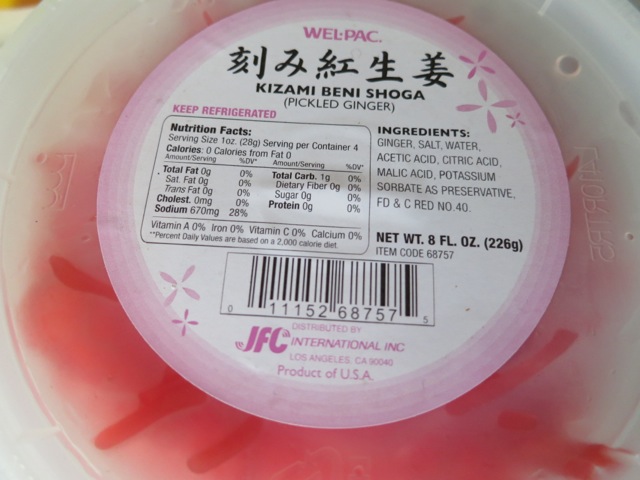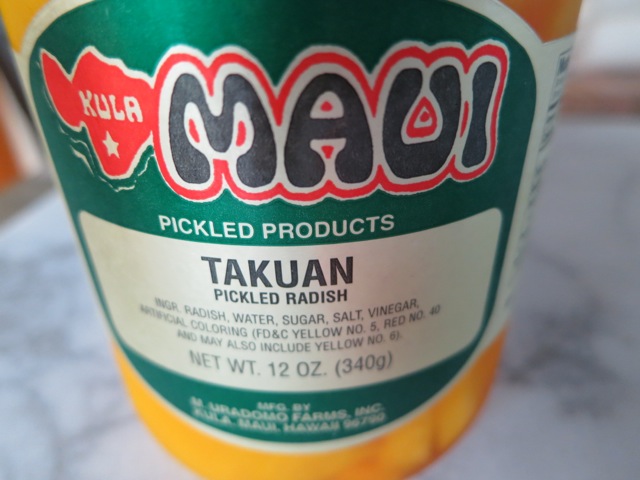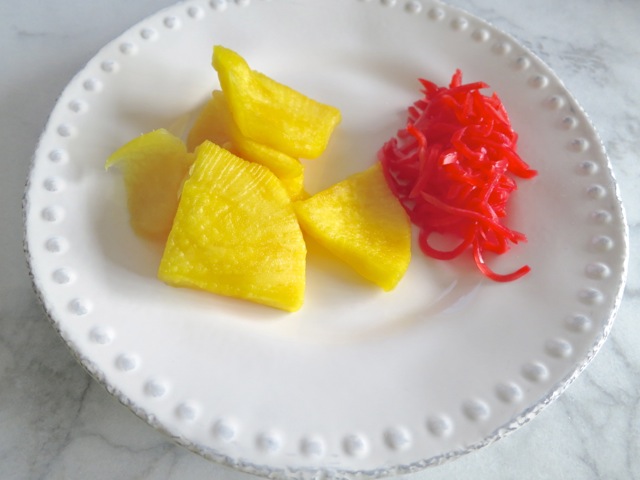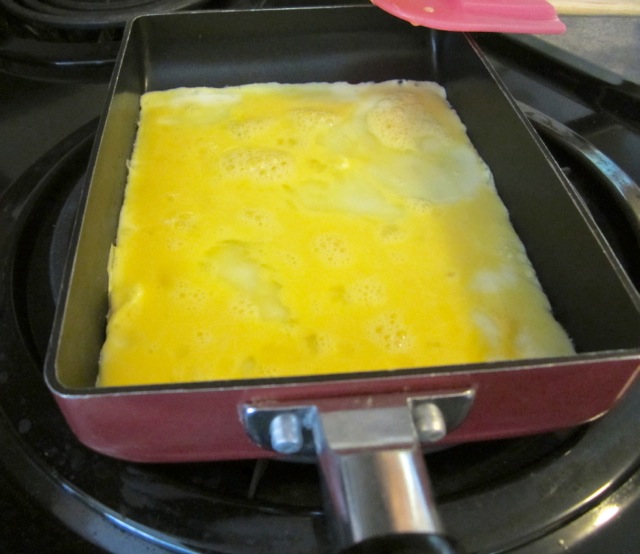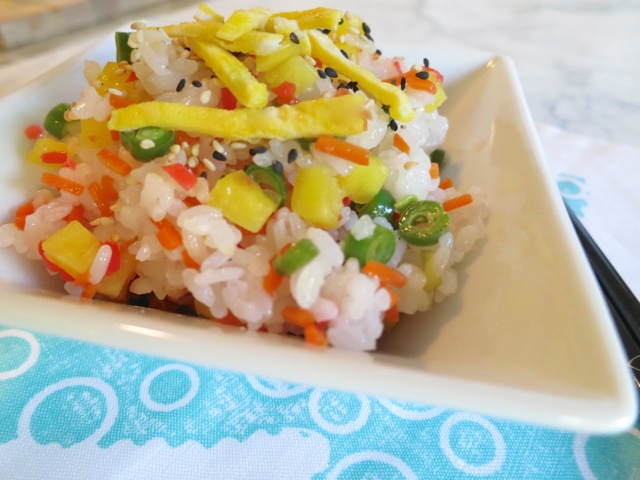This is one of my favorite Japanese side dishes served with rice and cold tofu. It makes for a very quick and delicious lunch. It can be prepared well in advance and doesn’t need any attention until you drizzle the sauce over it. It is so refreshing and healthy.
Spinach shrinks drastically when blanched so you’ll need a pound of fresh spinach for two servings. Once blanched, the spinach goes into an ice bath to stop the cooking quickly.
Blanched spinach has a gorgeous bright green color to it. And with the sauce drizzled over and around the spinach it makes for a beautiful presentation.
I divided the spinach (squeezed dry) into four equal pieces and shaped them into short rolls, then sliced them into rounds before adding the sauce.
Ground roasted sesame seeds are one of my favorite additions to this dish. Not only does it give the spinach a delicious nutty flavor, it also adds contrast to the bright green rounds and golden sauce.
I opted to use instant dashi because of the small amount needed for the recipe. It is convenient and tastes great in this sauce.
A side of tofu with green onions, ginger and soy sauce (and rice) complete a healthy meal for any day of the year.
- 1 pound fresh baby spinach leaves
- ½ cup dashi (I used instant dashi picture above. ½ cup warm water mixed with 1½ teaspoons dashi powder)
- 2 tablespoons soy sauce
- 1 tablespoon mirin
- roasted ground sesame seeds
- Bring a large pot of water to a boil. Blanch the spinach just until wilted, about 30-40 seconds. Immediately drain and transfer spinach to an ice bath. Once thoroughly chilled, remove spinach to a colander to drain.
- Meanwhile, combine dashi with soy sauce and mirin in a glass measuring cup (can be made in advance and kept refrigerated until ready to use). Set aside.
- Divide spinach into four equal portions. Squeeze out as much water as possible from each portion and form into short rolls. Slice each roll into equal sized rounds (serrated knife works best). Place rounds of spinach on serving plate. Drizzle sauce over and around the spinach. Sprinkle tops with ground sesame seeds. Serve at room temperature or slightly chilled.

